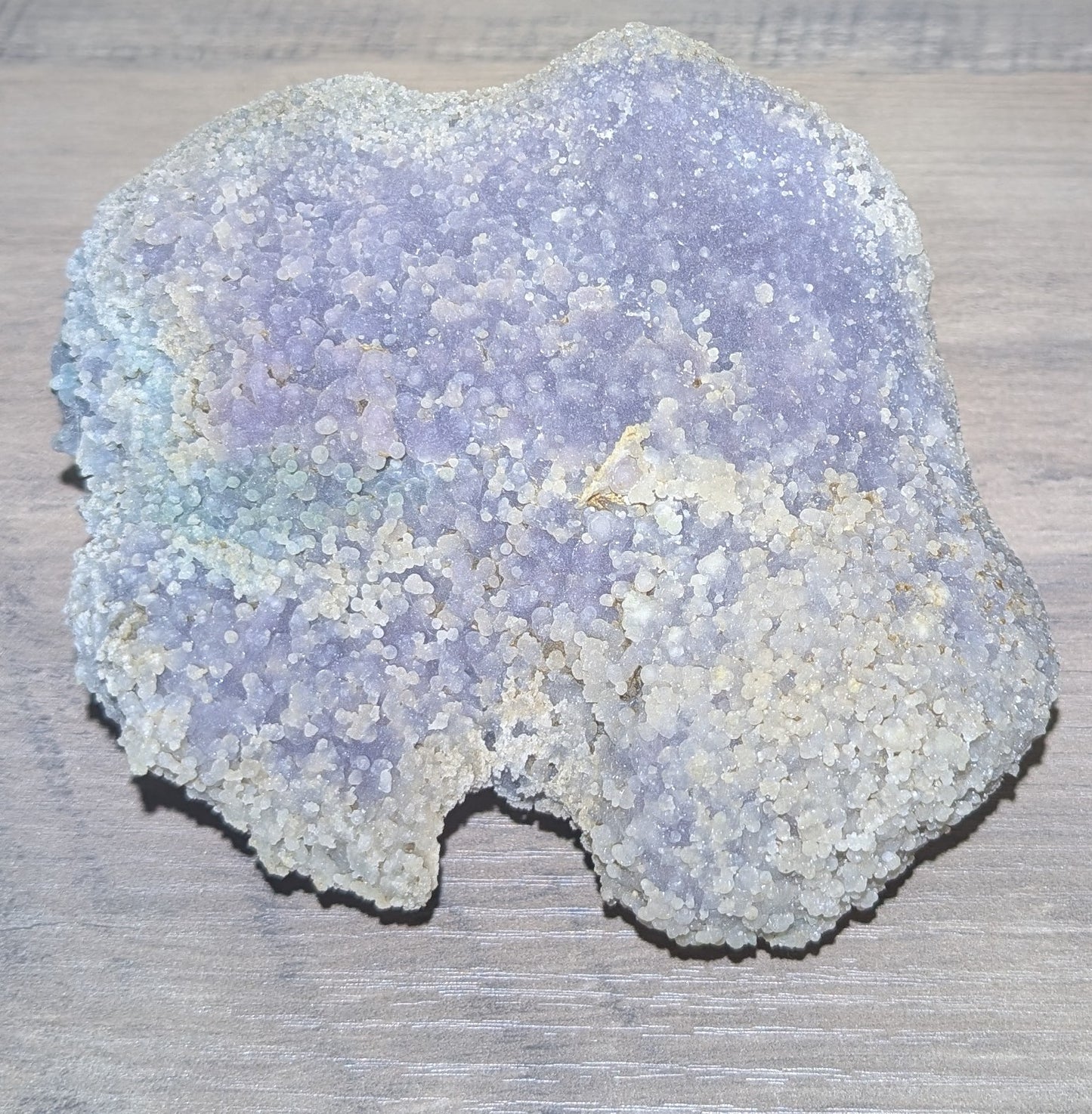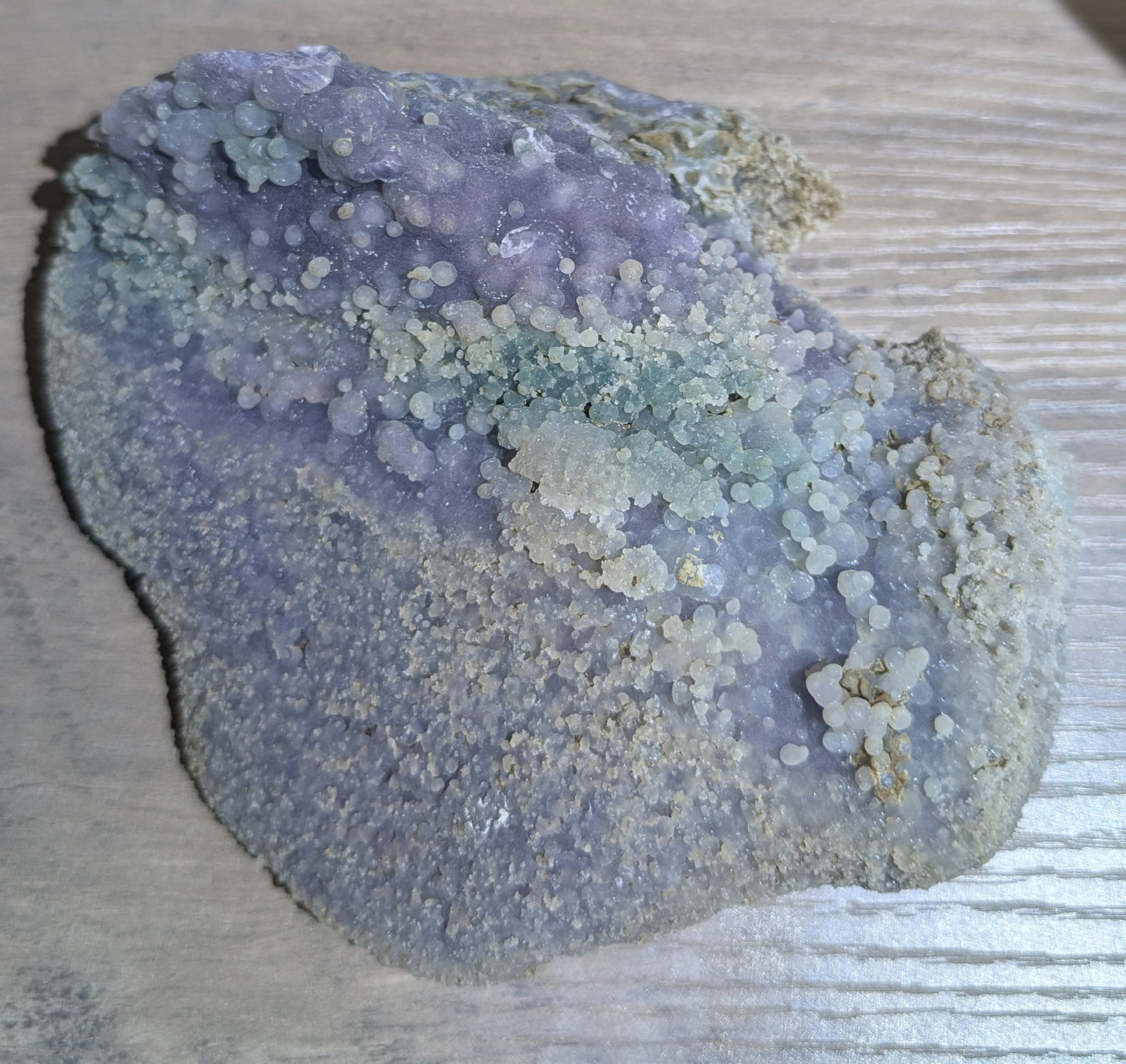Auglocqnuk
Grape Agate
Grape Agate
Couldn't load pickup availability
Grape agate is a distinctive mineral known for its clusters of small, rounded crystals that resemble a bunch of grapes, a characteristic that gives it its name. It is primarily found in the Mamuju area on Sulawesi Island, Indonesia, with additional occurrences reported in Utah, USA. The formation of grape agate occurs within volcanic rock cavities, specifically in andesitic to basaltic rocks, where gas bubbles trapped in cooling lava create voids. Over time, mineral-rich water and gases seep into these cavities, and silica from the surrounding rock dissolves and precipitates out, gradually building up in layers. This slow process, which took place roughly 20 million years ago during the Miocene period, results in the development of tiny, spherical chalcedony nodules that aggregate together to form the characteristic botryoidal (grape-like) clusters.
What makes grape agate unique is its specific formation habit. Unlike true agates, which are defined by concentric banding of chalcedony, grape agate lacks these bands. Instead, it forms a botryoidal aggregate, where microcrystalline chalcedony grows outward from a single point in all directions, creating the smooth, rounded, grape-like masses. The vibrant purple coloration is primarily due to trace amounts of manganese oxide (MnO₂) present in the hydrothermal fluids that facilitated its formation. The mineral is classified as a cryptocrystalline form of quartz (SiO₂), specifically a variety of chalcedony, which is composed of intergrowths of quartz and moganite. It has a Mohs hardness of 7, making it relatively durable, and its density is approximately 2.6 grams per cubic centimeter. The surface of the clusters often has a sparkling, druzy-like appearance due to the microscopic crystalline structure.
Share




